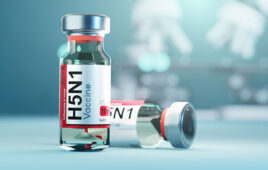
Oracle Health Sciences recently launched Oracle Clinical One, a cloud-based eClinical platform created to help bring drugs to market faster. We spoke with Steve Rosenberg, senior vice president and general manager of Oracle Health Sciences about how it will facilitate trials.
Drug Discovery & Development: What is the Clinical One Platform?
Steve Rosenberg: Instead of a set of applications, I describe it as a unified environment that is made up of services to support clinical trial conduct. Within that environment, there’s randomization, data collection, supply management, etc. so that when setting up or when conducting a trial one would pick the services they need and lo-and-behold it will be fielded. You wouldn’t build a trial based on randomization, and then build it based on EDC, and then build it based on transformations. You would just sit down and define the trial based on the services you need to conduct for that trial. The customer experience that we focus on is completely different than what they’re used to. Rather than having separate teams that do each of these different tasks, you would have potentially one unified team.
DD&D: What problem does the software solve?
Rosenberg: For the last 20 years or so, clinical research systems have been consumed on a point-solution basis, even when they are part of a vendor suite. A customer licenses an IOT system or an EDC system or some kind of data management system. They move through the process of setting up clinical trials, conducting clinical trials, looking at the data, doing that over and over again depending on the therapeutic area. Sometimes there are 50, 60, or 70 clinical trials for some therapeutic areas before they can get to submission. A lot of drugs die along the way, depending on phase I and II results, but for the ones who make it, there are a lot of trials and it’s really time consuming and burdensome on companies.
So we embarked on reimagining and redefining the way that clinical research systems are consumed by the customer. That’s really the focus: What’s the customer experience in using these systems?
DD&D: How does Clinical One streamline operations?
Rosenberg: To me, it really will change the game. It will shorten the time to set up a study (which is a big part of these programs) and take a lot of the cost out of the system which allows companies to put funds elsewhere to move therapies and research along. All in all, it will greatly reduce the time to go from first trial in patient through submission (if the drug gets that far), or to fast failure which is also pretty valuable.
We don’t fool ourselves. The real time-sink in clinical research is in the development of the molecule or the biologic—that’s where a lot of the time and effort goes, and that’s the magic that pharma brings. But once researchers get through animal trials and through approvals to get to human trials we want that part to be very, very, fast—and there’s no reason that it can’t be.
DD&D: What’s different about Clinical One compared to your current services?
Rosenberg: We have an incredibly broad suite of functionality that serves the entire clinical process. They work really well together and they’re integrated, but still, they’re licensed the way the customer consumes them—one module out a time. Clinical One has a unified approach to conducting clinical trials making it very different.
All of these services are in one place making it easier to consume. To make the customer experience unified, customers just tell the program they have a trial and it has all these things it needs to do.
The complexity of a clinical trial—whether it’s oncology or a statin –is just incredible. The manufacturing of drugs, the shipping of drugs, the choice of labs (a big lab, central or a local lab if it’s something more advanced), then you add in genomics and biomarkers or selection criteria for populations. It’s pretty complex. And it’s hard to have all of these different systems.
DD&D: What sort of updates can be expected in the future?
Rosenberg: We’re going to build everything over again, starting with randomization and drug supply, which launched with the platform. In order to do randomizations you have to have a certain amount of data entry and a certain amount of edit checks and branching logic because in order to randomize someone you have to take some information about them to see if they qualify for the trial.
Next, we are going to start working on all the components to support clinical research. These include the systems that keep track of sites and site performance, schedules, and events; and help with budgeting and that kind of stuff. Additionally we will include data capture. We’re also looking to add components for safety. There is a lot going on in terms of safety, and in terms of applying AI into safety intake. Again, the entire suite will end up being under the Clinical One umbrella.
The beauty of it is as technology evolves you can add to this very quickly. You just start adding services to the platform and you end up with enough services to conduct phase I trials; add a few more services you can do phase IV trials; and so it will be an ecosystem that can be built and expanded on rapidly. It’s almost like an organic environment that just kind of grows as opposed to a year from now releasing this capability, and in another two years release another one. We’ll just keep adding services that round out the functionality to what people need.
DD&D: How does a customer receive updates?
Rosenberg: Services are added to the environment by us and customers can take advantage of them or not. We have to be a little conservative because of the regulatory requirements of system validation. We can’t force everybody to take in everything all at once, but we are also allowed to have partners that can build systems alongside of it with seamless integration. In the new environment, these services can talk to each other so we can build things that can talk to the services and extend what they do.
DD&D: What inspired the development of the software?
Rosenberg: I never really thought about it from that perspective. I’ve been in the software business for almost 40 years in different segments, not just clinical research, and it became pretty frustrating over the last 15 years in this space when we looked out there and saw how behind it was compared to other industries in adopting more sophisticated software. Everything from horizontal applications like human capital management and ERP like Oracle has, is much more sophisticated in the way they were brought together in a more unified environment. And the way that this particular software was being done, it was just behind. In addition, I think the frustration that we all have is we have friends that are sick and don’t have the medicines they need. We can make a difference by making the process faster.
When you talk to pharma guys, their passion about bringing medicines to unmet medical needs is real. The more that we can help that the better it is. It feels a little too altruistic for me at some level, but it’s true. We think we can make a difference.
Filed Under: Drug Discovery



